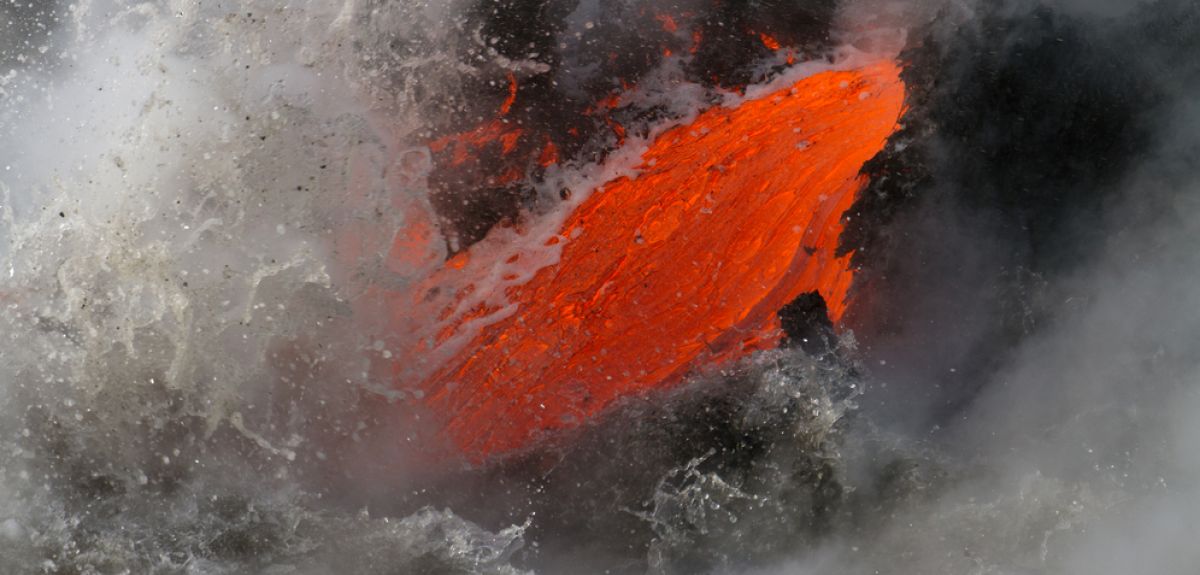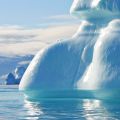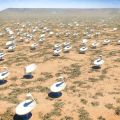
Image: Fredy Thuerig, via Shutterstock
A song of fire and ice in the ocean
Cyclic changes in the tilt of the Earth's axis and the eccentricity of its orbit have left their mark on hills deep under the ocean, a study published in Science has found.
These variations in the Earth’s position affect its climate; in particular, they drive glacial cycles.
The study demonstrated that sea level changes caused by the formation and melting of continental ice sheets have affected undersea volcanic processes that pattern the sea floor.
I talked to one of the study authors, Professor Richard Katz at Oxford University's Department of Earth Sciences, about fire, ice and sea-sickness.
OxSciBlog: What was new about your study?
Richard Katz: My coauthors went out in a Korean research ship to an area known as the Australian-Antarctic ridge, in the Southern Ocean between Australia and Antarctica.
I am not a sailor, so I didn't go along!
From the ship, they were able to reconstruct very detailed maps of the ocean floor from using sonar echoes.
It has long been known that the Earth’s magnetic field has reversed occasionally in its history; the timing of these reversals is known, and their positions are recorded in the sea floor as it moves away from the mid-ocean ridge. So we were able to calculate the age of the features we were looking at.
The area that we were looking at, the Australian-Antarctic ridge, is an underwater mountain range, formed by magma rising up as the mantle beneath the Earth's crust melts. We built up a map of all the features (such as hills running for hundreds of kilometres along the ridge) that are formed by eruption of magma onto the sea floor as the plates spread apart.
At mid-ocean ridges, mantle melting is caused by de-pressurisation of the mantle.
OSB: What affects the pressure on the mantle, and therefore its melting rate?
RK: The most important thing affecting the pressure on the mantle is the amount of rock and water above it. When sea level changes, the weight of water pushing downward changes, and so the pressure changes.
So we were interested in episodes of glacier formation and destruction, since these can change sea water levels by as much as 100 metres: during ice ages, large amounts of water are taken out of oceans and frozen in continental glaciers, called ice sheets. So sea levels can drop drastically, and there is a reduction of pressure on the mantle beneath the sea floor. This means that mantle melting speeds up.
Conversely, as glaciers melt with the retreat of ice ages, sea levels rise, the pressure on the sea floor mantle rises, and there is less melting in the mantle below. More or less mantle melting means more or less volcanic activity, and since this volcanic activity creates the oceanic crust, it also means thicker or thinner crust. The variations in crust are what we measured from the ship.
OSB: So what factors modulate the advent and retreat of ice ages?
RK: One factor is the amount of the sun’s radiation falling on Earth. There are periodic variations in the Earth's orbit and tilt – the so-called Milankovitch cycles – which alter the amount of the Sun's heat reaching the earth. We know that these variations have paced ice ages on Earth over the past two million years.
Using a mathematical technique called spectral analysis, we found that the hills running along the Australian-Antarctic ridge have been laid down in periodic patterns that bear the fingerprint of the 23,000, 41,000 and 100,000-year Milankovitch cycles.
We also developed computational models that took into account sea-level changes, as well other factors (such as how long the magma takes to rise from the mantle to the volcano) which had been ignored by other models. This was the second big advance in our paper.
The results from our model are a good, quantitative fit to the actual measurements from the sonar.
OSB: Are the effects of man-made climate change on glacier melting and sea level rise likely to affect these processes?
RK: The effects that we're looking at are caused by sea level changes of 100 metres or more. This is what happens when the Earth transitions between an ice age and an interglacial period. But we are currently in an interglacial period.
Man-made climate change is likely to change sea level on the order of 10 metres in the coming centuries. Depending on how fast this change happens, it could affect mantle melting.
But that's still very small compared to the sort of changes that happened during the transition from an ice-age to a warmer climate. So man-made climate change is unlikely to have a measurable effect on the undersea volcanic processes that we are looking at.
OSB: You've shown that long-term climate affects volcanism. Does this work the other way around too: can volcanic activity feedback onto climate?
RK: It's an intriguing possibility, since there is about 10,000 times more carbon dioxide locked away inside the Earth, compared to the combined amount in the atmosphere and the oceans.
We know that long (over tens of thousands to millions of years of years) periods of volcanic activity are associated with higher temperatures, because volcanoes release this carbon dioxide which had otherwise been locked away, a process called volcanic degassing.
However, nobody has shown that glacial cycles are related to volcanic degassing. We think that this is possible, and this is a research question that we're actively pursuing.
OSB: What other future work are you planning?
RK: We'd really like data from other ridges in the middle of oceans: these results are from measurement from just one. But if this is a general process, as we think, that the fingerprints of glacial cycle changes should be visible in other mid-ocean ridges too.
The problem is that it is very expensive to go out to the sea and make these measurements, so the opportunity doesn't arise very often.
We're fortunate to have had funding from the US National Science Foundation to make measurements of the Juan de Fuca ridge in the Pacific last year. We hope that analysing this data will support the ideas that we have put forward in this paper.
 Seashells and sediment: measuring oxygen
Seashells and sediment: measuring oxygen  Bubble research rises to the top
Bubble research rises to the top Coming Soon: the Universe in 3D Widescreen
Coming Soon: the Universe in 3D Widescreen Economic games don't show altruism
Economic games don't show altruism Can science find the right diet for you?
Can science find the right diet for you?